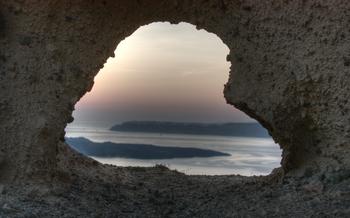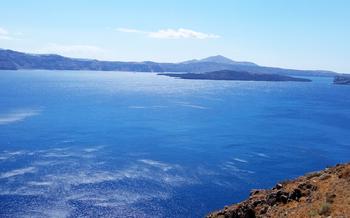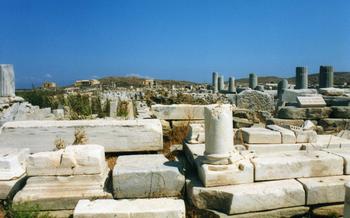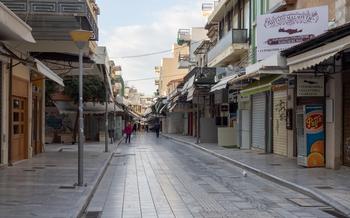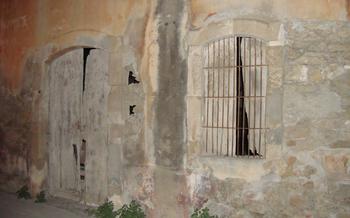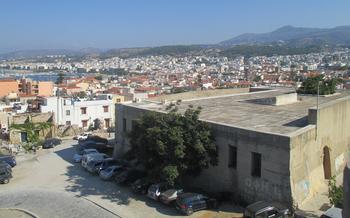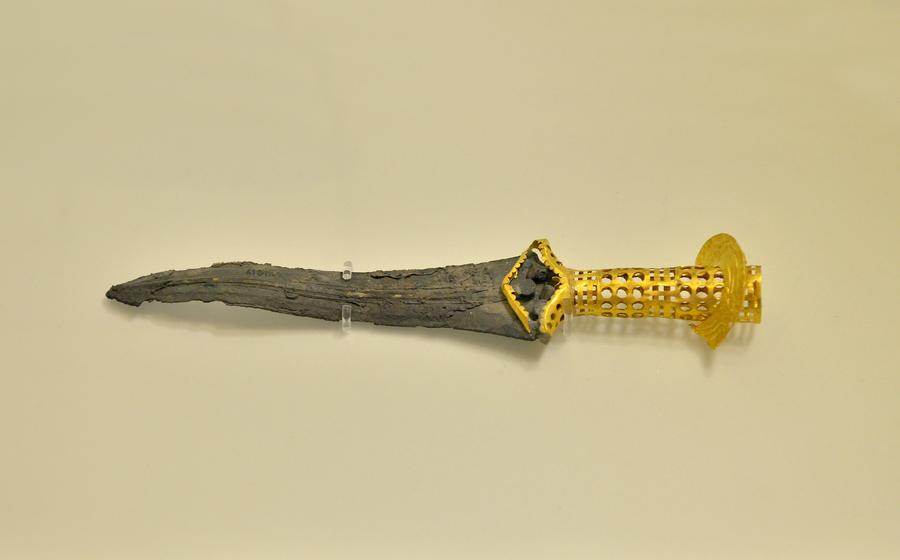
The Palace of Malia
- The Palace of Malia: An Overview
- Exploring the Central Court
- The Royal Quarters: A Glimpse into Minoan Aristocracy
- The Workshops and Storerooms
- The Grand Staircase
- Throne Room: A Seat of Power and Symbolism
- The Cult Center: A Realm of Sacred Rituals
- The Water Management System
- The Palace Gardens
- The surrounding Minoan Town
- The Palace's Destruction and Abandonment
- Archaeological Excavations and Discoveries
- Visiting the Palace of Malia: Practical Information
- Insider Tip: Unveiling the Hidden Gems of the Palace of Malia
The Palace of Malia: An Overview
The Palace of Malia, nestled in the fertile Mesara Plain of Crete, stands as a testament to the ingenuity and artistry of the ancient Minoan civilization. Constructed during the Bronze Age, around 1900 BC, the palace served as the administrative and religious center of the region, overseeing a vast network of settlements and agricultural lands. Its grandeur and sophistication reflect the power and influence of the Minoan rulers, who established a maritime empire that dominated the Aegean Sea for centuries.
The palace's architectural design showcases the Minoans' mastery of urban planning and engineering. Its sprawling complex encompasses an area of over 7,000 square meters, featuring a central courtyard surrounded by various structures, including royal quarters, workshops, storerooms, and a cult center. The palace's unique features, such as its grand staircase, throne room, and intricate frescoes, provide valuable insights into the daily lives, rituals, and beliefs of the Minoan people.
Exploring the Central Court
The central courtyard, the heart of the Palace of Malia, is a vast open space surrounded by imposing structures. These structures include the royal quarters, workshops, storerooms, and the grand staircase. The courtyard served as a central gathering place for various activities, including religious ceremonies, official functions, and economic transactions.
One notable feature of the central courtyard is the central pillar, a massive stone column that stands tall in the center. This pillar is believed to have had both structural and symbolic significance. It may have served as a support for the upper floors of the palace or as a symbolic representation of the palace's power and authority.
The surrounding structures of the central courtyard feature a variety of architectural elements, including columns, doorways, and windows. These structures were carefully designed and decorated to reflect the importance and grandeur of the palace. The royal quarters, in particular, were adorned with elaborate frescoes and wall paintings, depicting scenes of royal life and religious ceremonies.
The Royal Quarters: A Glimpse into Minoan Aristocracy
The Royal Quarters of the Palace of Malia offer a glimpse into the opulent lifestyle of the Minoan rulers and their families. These lavishly decorated living spaces were designed to showcase the power and prestige of the monarchy.
The walls of the royal chambers were adorned with elaborate frescoes and wall paintings, depicting scenes of royal processions, religious ceremonies, and everyday life in the palace. These vibrant artworks provide valuable insights into the cultural and social practices of the Minoan civilization.
The private chambers of the rulers were adorned with intricate carvings, colorful tiles, and elegant furniture. Storage rooms and workshops, where skilled artisans crafted exquisite artifacts, were also located within the royal quarters. These spaces reveal the sophisticated craftsmanship and economic activities that sustained the Minoan palace economy.
The Workshops and Storerooms
Within the confines of the Palace of Malia, a complex network of workshops and storerooms reveals the advanced craftsmanship and economic activities that sustained the Minoan civilization. These specialized areas, often clustered together, showcase the diverse skills and ingenuity of the palace's inhabitants.
Pottery workshops, with their kilns and clay-working tools, produced a vast array of ceramic vessels, ranging from utilitarian storage jars to intricately painted decorative ware. The intricate designs and motifs that adorned these vessels not only served an aesthetic purpose but also held symbolic and religious significance.
Metalworking workshops, equipped with forges and anvils, transformed raw metals into a variety of tools, weapons, and ornaments. Skilled artisans employed advanced techniques, such as casting, hammering, and soldering, to create bronze tools, jewelry, and intricate metal vessels.
Stone carving workshops, with their chisels and hammers, shaped blocks of limestone and alabaster into sculptures, reliefs, and architectural elements. These skilled craftsmen created lifelike statues of deities, intricate decorative friezes, and monumental pillars that adorned the palace's grand spaces.
Adjacent to these workshops were storerooms, where the palace's wealth and resources were carefully managed and stored. These storerooms held an abundance of agricultural produce, including grains, olives, and wine, as well as imported goods from distant lands, such as spices, textiles, and precious metals. The efficient storage and distribution of these resources ensured the smooth functioning of the palace and the surrounding community.
The Grand Staircase
Ascending from the central court, a monumental staircase leads to the upper floors of the palace, showcasing the architectural prowess of the Minoan builders. Constructed with large stone blocks, the staircase features a central column that supports the weight of the upper structure. Its intricate design and engineering techniques demonstrate the advanced level of craftsmanship achieved by the Minoans.
The exact purpose of the grand staircase remains a subject of debate among archaeologists. Some theories suggest that it served as a ceremonial pathway for royal processions, while others believe it provided access to private chambers and workshops on the upper levels. Regardless of its intended use, the grand staircase stands as an impressive testament to the architectural ingenuity and sophistication of the Minoan civilization.
Throne Room: A Seat of Power and Symbolism
As you make your way through the grand corridors of the Palace of Malia, you will eventually find yourself in the Throne Room, a chamber that exudes an aura of authority and majesty. This ceremonial space was reserved for official functions, audiences, and important gatherings, where the rulers of Malia held court and conducted their affairs of state.
The Throne Room is adorned with exquisite frescoes and decorations that depict royal processions, paying homage to the power and prestige of the Minoan rulers. The intricate artwork showcases scenes of grandeur, with brightly colored figures garbed in elaborate attire. These murals offer a glimpse into the opulence and sophistication of the Minoan court.
At the heart of the Throne Room sits the symbolic throne, a physical manifestation of the ruler's authority. Carved from precious materials and adorned with intricate designs, the throne commands attention and emphasizes the significance of the monarch. Its placement within the room is deliberate, positioned to convey a sense of hierarchy and power.
Whether you imagine the rulers of Malia seated upon this throne, issuing decrees and receiving foreign dignitaries, or picture the lively atmosphere of courtly gatherings, the Throne Room transports you back in time to the era of Minoan grandeur. It is here that the political and social power of the palace was most visibly displayed, leaving an enduring legacy that continues to captivate visitors to this day.
The Cult Center: A Realm of Sacred Rituals
The Palace of Malia was not merely a center of political power but also a sacred place where religious rituals and ceremonies were performed. At the heart of this spiritual realm lay the cult center, a complex of altars, shrines, and sacred objects dedicated to various deities.
Within the cult center, visitors can still witness the remnants of these ancient religious practices. Altars, adorned with intricate carvings and symbols, once served as platforms for offerings to the gods. Shrines, dedicated to specific deities, housed sacred objects such as figurines, votive offerings, and ritual vessels.
Archaeologists have uncovered a wealth of evidence suggesting the performance of various ceremonies and rituals within the cult center. These rituals may have involved processions, libations, and sacrifices, all aimed at appeasing the gods and seeking their favor.
The cult center at the Palace of Malia provides a glimpse into the religious beliefs and practices of the Minoan civilization. It underscores the importance of religion in Minoan society and the role of the palace as a central locus of spiritual and ritual activity.
The Water Management System
The Minoans of Malia demonstrated remarkable ingenuity in their water management techniques. An intricate system of aqueducts, cisterns, and drainage channels ensured a reliable water supply for domestic and agricultural purposes. Aqueducts, some of which were over 5 kilometers long, transported water from distant springs and rivers to the palace and the surrounding town. These impressive feats of engineering not only provided a consistent water source but also contributed to the palace's impressive sanitation system.
Within the palace complex, a network of underground channels and drains efficiently collected and disposed of wastewater, preventing contamination and promoting hygiene. Large cisterns, carefully carved into the bedrock, stored rainwater and excess water from the aqueducts, ensuring a steady supply during dry periods.
The advanced water management system of the Palace of Malia not only facilitated daily life but also played a crucial role in the palace's agricultural productivity. Irrigated fields surrounding the palace produced abundant crops, supporting the palace's large population and contributing to the overall prosperity of the Minoan civilization.
The Palace Gardens
Surrounding the grand Palace of Malia, a verdant oasis once flourished—the palace gardens. These gardens were not mere ornamental additions but played a significant role in the daily life of the palace's inhabitants.
Imagination can conjure up the vibrant hues of flowers, the rustling of leaves in the breeze, and the sweet fragrance of blossoming plants that filled the air. The gardens were meticulously designed to provide aesthetic pleasure and tranquility to those who strolled through their paths.
Beyond their ornamental charm, the gardens served a practical purpose. They provided a source of fresh produce, with fruits, vegetables, and herbs grown for consumption by the palace residents. The gardens also likely served as a recreational space, where royalty and their guests could relax and enjoy the natural beauty that surrounded them.
One can envision the royal family strolling through the gardens, admiring the colorful blooms and savoring the tranquility of the surroundings. Perhaps they would engage in leisurely conversations, escape the pressures of court life, or simply bask in the serenity of nature.
Today, visitors to the Palace of Malia can still admire the remnants of these ancient gardens. Although time has taken its toll, the outlines of flower beds and the presence of various plant species hint at the former glory of this verdant paradise.
The surrounding Minoan Town
Beyond the imposing palace walls, the ancient Minoan town of Malia flourished, creating a vibrant community that supported the palace's activities. Residential areas, workshops, and public buildings lined the streets, providing a glimpse into the daily lives of the town's inhabitants.
Archaeological excavations have revealed a complex urban layout, with houses, shops, and storage facilities arranged in orderly rows. The town's residents were engaged in various economic activities, including pottery, weaving, and metalworking, contributing to the palace's wealth and prosperity.
Public buildings, such as shrines and workshops, played a vital role in the community's social and religious life. These structures served as gathering places for religious ceremonies, trade, and communal activities, fostering a sense of belonging and unity among the town's residents.
The relationship between the palace and the town was symbiotic. The palace provided leadership and protection to the town, while the town supplied the palace with goods and services. This mutually beneficial relationship ensured the stability and prosperity of both entities.
The Palace's Destruction and Abandonment
The reasons behind the destruction of the Palace of Malia are still shrouded in mystery, with theories ranging from natural disasters to human factors. Evidence suggests that a series of powerful earthquakes, possibly accompanied by a devastating fire, played a significant role in the palace's demise.
Archaeological excavations have revealed layers of destruction and rebuilding, indicating that the palace was repeatedly damaged and repaired before its final abandonment. Human factors, such as invasions, conflicts, or internal power struggles, may have contributed to the palace's downfall.
Over time, the once-magnificent palace was gradually abandoned, its grandeur fading into the sands of history. The site remained uninhabited for centuries, slowly succumbing to the forces of nature and the passage of time. The ruins of the palace were eventually buried under layers of sediment and vegetation, preserved beneath the earth until their rediscovery in the 20th century.
Archaeological Excavations and Discoveries
The Palace of Malia, like many other Minoan palaces, was abandoned and fell into disrepair over time. It remained buried and forgotten for centuries until the early 20th century, when archaeological excavations brought it back to light.
In 1915, the Greek archaeologist Ioannis Pendlebury began the first systematic excavations at the site. He uncovered the remains of the palace and surrounding town, revealing the impressive architecture, intricate frescoes, and numerous artifacts that shed light on the Minoan civilization.
Pendlebury's excavations continued until 1930, when he was succeeded by the French archaeologist Jean Charbonneaux. Charbonneaux focused on the restoration and conservation of the palace, ensuring its preservation for future generations.
In the 1960s, the Greek Archaeological Service resumed excavations at Malia under the direction of Ioannis Sakellarakis. Sakellarakis made significant discoveries, including the Throne Room with its exquisite frescoes and the remains of the palace gardens.
Archaeological excavations at Malia are ongoing, with teams of archaeologists from Greece and other countries working to uncover more secrets of the Minoan palace and its inhabitants. New discoveries are constantly being made, providing valuable insights into the history, culture, and daily life of this ancient civilization.
Visiting the Palace of Malia: Practical Information
To visit the Palace of Malia, plan your trip during its opening hours, which are typically from 8:00 AM to 3:00 PM daily. Admission fees are applicable, with reduced rates for students and seniors. Guided tours are available, offering a more in-depth understanding of the palace's history and significance.
To make the most of your visit, consider arriving early to avoid crowds and heat, especially during the summer months. Wear comfortable shoes as you'll be doing a fair amount of walking on uneven surfaces. Sunscreen, a hat, and water are essential, as there's limited shade on the site.
For visitors with disabilities, the palace provides wheelchair accessibility to most areas, including the central court, the throne room, and the cult center. Accessible restrooms are also available.
After exploring the palace, take some time to wander around the surrounding Minoan town, where you can see the residential areas, workshops, and public buildings that once thrived alongside the palace. This will give you a more comprehensive understanding of the ancient Minoan civilization.
Remember to be respectful of the site's historical significance and follow the guidelines provided by the authorities to ensure its preservation for future generations.
Insider Tip: Unveiling the Hidden Gems of the Palace of Malia
Beyond the main attractions of the Palace of Malia, there are hidden gems waiting to be discovered by curious travelers. One such gem is the Minoan Pillar Crypt, located just outside the palace walls. This underground chamber, carved into the bedrock, features a series of massive pillars and is believed to have been used for religious rituals or storage purposes.
For a unique perspective of the palace, venture to the Palace Hilltop, which offers panoramic views of the entire site, the surrounding countryside, and the distant coastline. This spot is ideal for capturing stunning photographs and appreciating the palace's grandeur from a different angle.
Combine your visit to the Palace of Malia with a trip to the nearby Malia Archaeological Museum. This museum houses a rich collection of artifacts excavated from the palace and the surrounding area, providing deeper insights into the Minoan civilization and their way of life.
To fully immerse yourself in the local culture, take the opportunity to explore the Malia Farmers Market. Held every Sunday, this vibrant market offers a glimpse into the daily lives of the locals as they trade fresh produce, handmade crafts, and traditional delicacies.
Remember to respect local customs and traditions when visiting the Palace of Malia. Dress modestly, avoid loud noises and disruptive behavior, and be mindful of the site's historical significance. Embrace the opportunity to engage with the friendly locals, who are always eager to share their knowledge and stories about this remarkable place.

